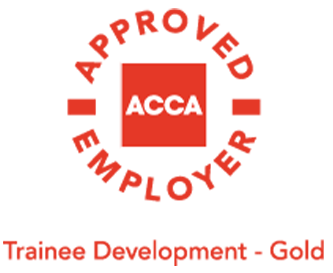July Questions and Answers
Newsletter issue – July 2024
Q: I'm a business owner. I've recently purchased new equipment for my business costing £74,000. Specifically, could you explain how the Annual Investment Allowance (AIA) works for the 2024/25 tax year and how I can claim it for these purchases?
A: Businesses can claim capital allowances for things that they buy and intend to keep to use for the purposes of the business. Officially described by HMRC as ‘plant and machinery’, in most cases you can deduct the full costs of these items from your profits. That is thanks to the Annual Investment Allowance (AIA) that you have correctly identified as the key tax relief here. It’s designed to encourage businesses to invest in their operations.
So, the latest rules for the 2024/25 tax year give businesses an AIA limit of £1,000,000. This means you can invest up to £1,000,000 in qualifying assets and receive 100% tax relief on this expenditure. So your £74,000 outlay is well within the limits and you can deduct that entire amount from your profits. By utilizing the AIA, your Corporation Tax will be lower.
Just be sure what you’ve bought counts as ‘plant and machinery’. HMRC says it needs to be “items that you keep to use in your business” and can include parts of a building considered ‘integral’. It can also be the costs for demolishing plant and machinery and commercial vehicles (excluding cars).
An example of what would not count is something used for entertainment such as a yacht or karaoke machine. Items you lease also do not count, unless you have a hire purchase contract.
To claim the AIA, you need to add it to your company’s tax return (CT600) for the relevant accounting period. So, we advise to keep detailed records of the expenditure and the assets purchased. If you need any further information or help regarding future capital allowances, please do get in touch with our team.
Q: I’m self-employed and have heard about the benefits of using the Simplified Expenses system for calculating some of my business expenses. Could you explain how this works for the 2024/25 tax year and what kind of expenses I can claim.
A: The Simplified Expenses scheme, run by HMRC, boils down to this: it allows self-employed individuals to calculate certain business expenses using flat rates rather than actual costs. Both sole traders and business partnerships without companies as partners can take advantage.
It can be advantageous in saving time, cutting down on keeping records and make some expense calculations more straightforward.
Flat rates can be used for business use of your home (working from home), costs for some vehicles used in your business, and living on your business premises. You record these on your Self-Assessment Tax Return.
If you work from home, you can use a flat rate based on the number of hours you work there each month:
- 25 to 50 hours: £10 per month.
- 51 to 100 hours: £18 per month.
- 101 or more hours: £26 per month.
So, for example, if you work 60 hours per month from home, that would mean calculating £18 per month x 12 months - totalling £216 per year that you can claim as a business expense on your tax return.
If you use your personal vehicle for business purposes, you can claim a flat rate per mile. For cars and vans, it’s 45p per mile for the first 10,000 miles, then 25p per mile. And for motorcycles, it’s 24p per mile.
Simplified Expenses can not be used for all types of expenses. Other business costs must still be calculated using actual costs. For example, these might include buying equipment or advertising. The scheme is optional, so you can use actual costs for all of the above, if you prefer.
Q: Our company has previously claimed R&D tax relief under the Research and Development Expenditure Credit (RDEC) scheme but I’m aware that there have been changes for the 2024/25 tax year. Can you please summarise what we should be aware of and how this might affect our next claim?
A:You’re correct in saying there have been some changes – arguably quite significant ones for the new tax year in the area of Research and Development (R&D) tax relief.
That’s because we now have a new system combining the Research and Development Expenditure Credit (RDEC) and the small or medium enterprise (SME) R&D relief. The merged scheme is designed to simplify and improve things, with a single set of qualifying rules for most businesses.
The scheme “establishes an above-the-line credit that allows companies to claim for their qualifying R&D costs, including contracted out R&D, and incorporates the more generous SME scheme PAYE and National insurance contributions cap,” HMRC states.
For businesses like yours using the old RDEC system, the new system is quite a bit more generous compared to the past. Before April 2023, the RDEC rate was 13%. Now, there is a single rate of 20% above the line credit for the new RDEC scheme.
The new regime for claims comes into effect for accounting periods starting after 1 April 2024. For a deeper understanding of how your business could benefit from R&D tax reliefs, do drop us a line and our team can guide you through in more detail.






